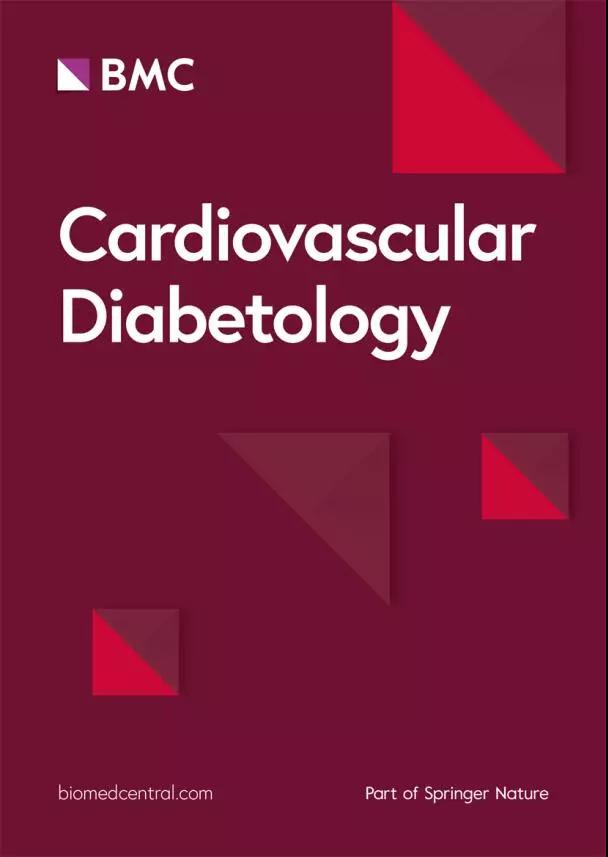甘油三酯-葡萄糖指数与急性心肌梗死并发心源性休克的发生和预后的相关性:来自两个大型队列的数据
IF 8.5
1区 医学
Q1 CARDIAC & CARDIOVASCULAR SYSTEMS
引用次数: 0
摘要
甘油三酯-葡萄糖(TyG)指数是胰岛素抵抗的可靠指标,已被确定为多种心血管疾病的有效标志物。然而,TyG 指数与急性心肌梗死并发心源性休克(AMICS)的相关性仍不确定。我们的研究旨在通过全面分析两个大规模队列来阐明这种关系。利用 eICU 协作研究数据库和重症监护医学信息市场 IV 的记录,通过逻辑和相关模型以及受限立方样条曲线(RCS),多中心和回顾性地评估了 TyG 与 AMICS 发病率和预后之间的关系。为了平衡潜在的混杂因素,采用了倾向评分匹配(PSM)、逆概率治疗加权(IPTW)和重叠加权(OW)。根据潜在的调节因素进行了分组分析。最终共纳入了 5208 名 AMI 患者,其中包括 375 名 CS 患者。发生 CS 的 AMI 患者的 TyG 指数明显高于未发生 CS 的患者[9.2 (8.8-9.7) vs. 9.0 (8.5-9.5)],在识别 AMICS 和一般 AMI 方面具有中等辨别能力(AUC:0.604)。逻辑分析表明,TyG指数与院内死亡率和重症监护室死亡率显著相关。RCS分析表明,在AMICS人群中,TyG指数升高与住院和重症监护室死亡率风险增加之间存在线性关系。在 PSM、OW 和 IPTW 调整后的人群中,TyG 指数较高且接受过 CS 的患者的死亡风险仍明显增加。相关分析表明,TyG指数与APS评分之间存在明显联系。亚组分析显示,TyG指数升高与死亡率之间存在稳定联系,尤其是在老年人、女性、超重或高血压患者以及无糖尿病患者中。TyG指数升高与急性心肌梗死后的CS发病率和AMICS人群较高的死亡率风险有关。我们的研究结果表明,TyG指数在AMICS中的作用之前尚未披露,仍需进一步验证。本文章由计算机程序翻译,如有差异,请以英文原文为准。
Triglyceride-glucose index correlates with the occurrence and prognosis of acute myocardial infarction complicated by cardiogenic shock: data from two large cohorts
Triglyceride-glucose (TyG) index, a dependable indicator of insulin resistance, has been identified as a valid marker regarding multiple cardiovascular diseases. Nevertheless, the correlation of TyG index with acute myocardial infarction complicated by cardiogenic shock (AMICS) remains uncertain. Our study aims for elucidating this relationship by comprehensively analyzing two large-scale cohorts. Utilizing records from the eICU Collaborative Research Database and the Medical Information Mart for Intensive Care IV, the link between TyG and the incidence and prognosis of AMICS was assessed multicentrally and retrospectively by logistic and correlation models, as well as restricted cubic spline (RCS). Propensity score matching (PSM), inverse probability of treatment weighting (IPTW), and overlap weighting (OW) were employed to balance the potential confounders. Subgroup analyses were performed according to potential modifiers. Overall, 5208 AMI patients, consisting of 375 developing CS were finally included. The TyG index exhibited an apparently higher level in AMI populations developing CS than in those who did not experienced CS [9.2 (8.8–9.7) vs. 9.0 (8.5–9.5)], with a moderate discrimination ability to recognize AMICS from the general AMI (AUC: 0.604). Logistic analyses showed that the TyG index was significantly correlated with in-hospital and ICU mortality. RCS analysis demonstrated a linear link between elevated TyG and increased risks regarding in-hospital and ICU mortality in the AMICS population. An increased mortality risk remains evident in PSM-, OW- and IPTW-adjusted populations with higher TyG index who have undergone CS. Correlation analyses demonstrated an apparent link between TyG index and APS score. Subgroup analyses presented a stable link between elevated TyG and mortality particularly in older age, females, those who are overweight or hypertensive, as well as those without diabetes. Elevated TyG index was related to the incidence of CS following AMI and higher mortality risks in the population with AMICS. Our findings pointed a previously undisclosed role of TyG index in regard to AMICS that still requires further validation.
求助全文
通过发布文献求助,成功后即可免费获取论文全文。
去求助
来源期刊

Cardiovascular Diabetology
医学-内分泌学与代谢
CiteScore
12.30
自引率
15.10%
发文量
240
审稿时长
1 months
期刊介绍:
Cardiovascular Diabetology is a journal that welcomes manuscripts exploring various aspects of the relationship between diabetes, cardiovascular health, and the metabolic syndrome. We invite submissions related to clinical studies, genetic investigations, experimental research, pharmacological studies, epidemiological analyses, and molecular biology research in this field.
 求助内容:
求助内容: 应助结果提醒方式:
应助结果提醒方式:


